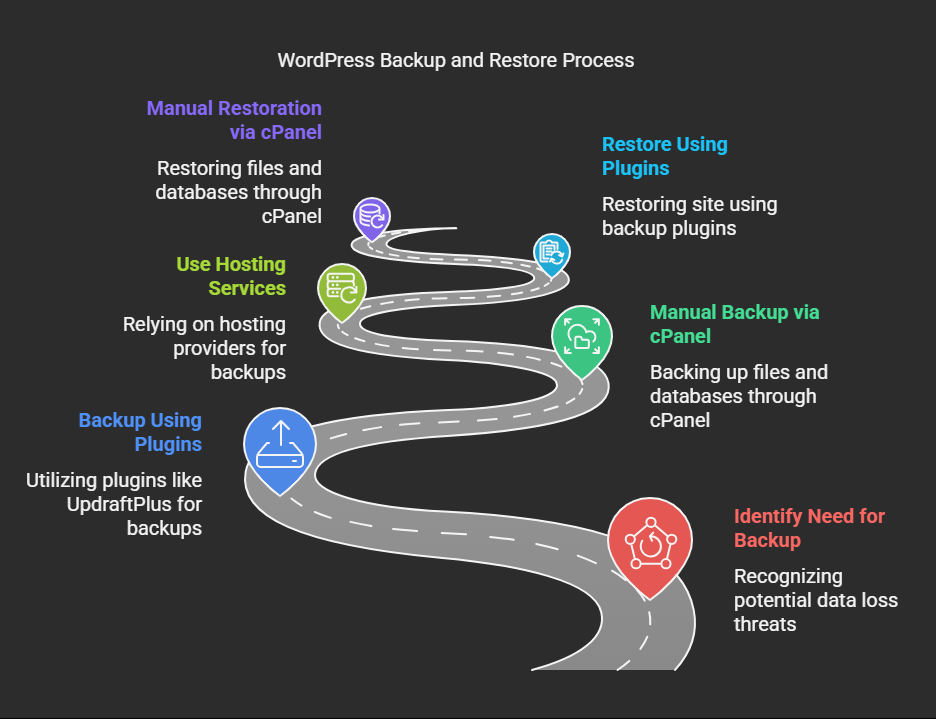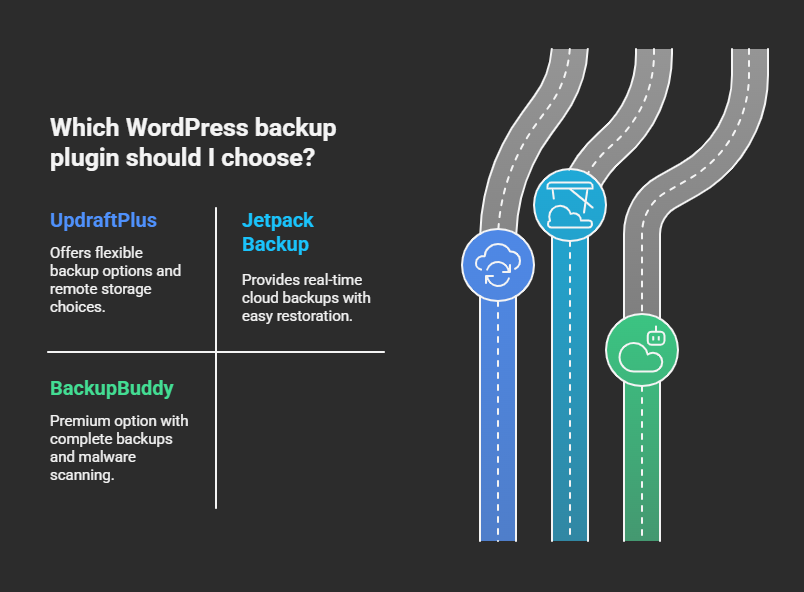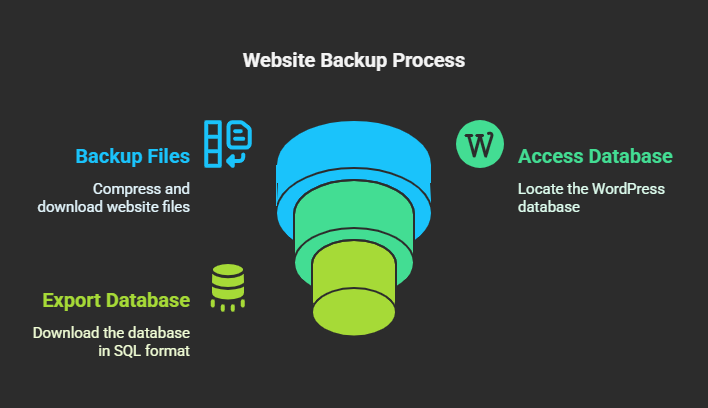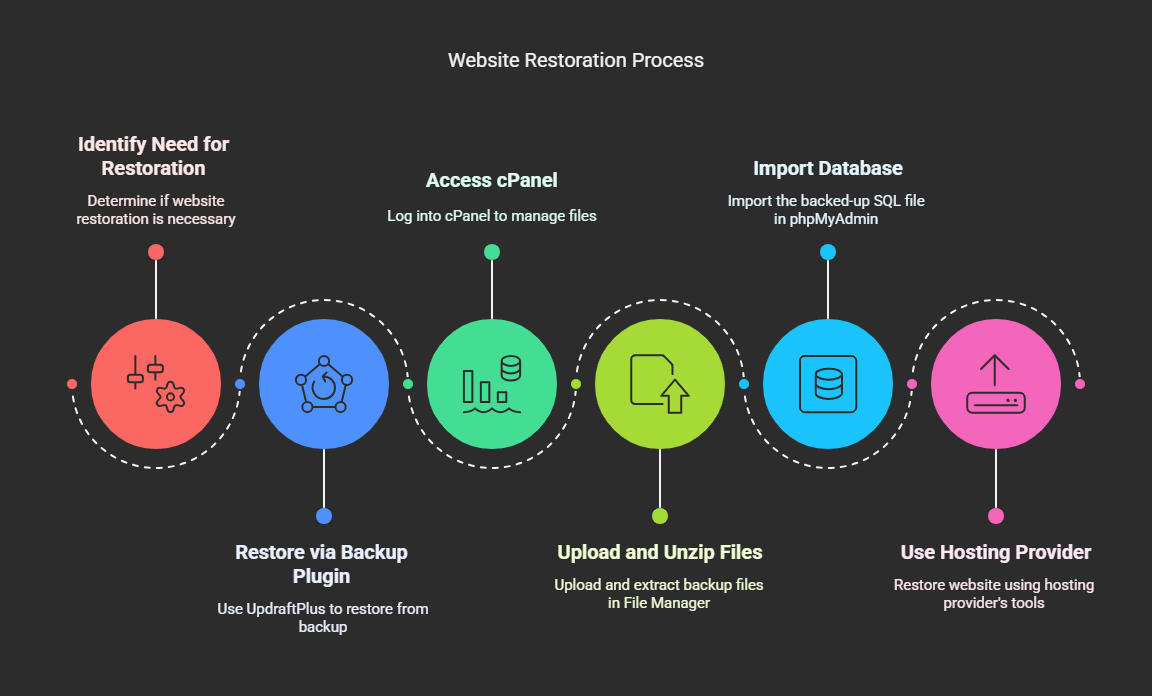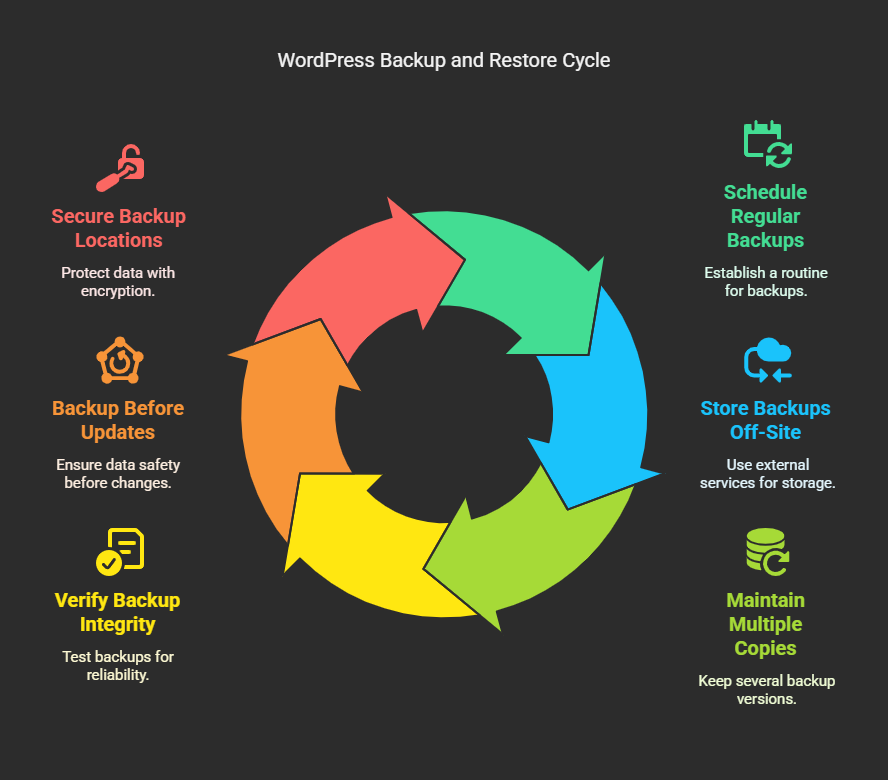This article explains how WordPress site content, settings, and data can be lost or damaged due to any of hacking, accidental deletion, or server crashes. In this guide, we walk you through the steps of backing up and restoring WordPress sites by performing several tasks to ensure that your sites are always safe and recoverable.
Why You Need to Backup Your WordPress Website?
The loss through such website data can cause havoc in your life. The following are some critical reasons why you need backup for every website:
➤Cybersecurity Threat: Your site can get hacked; it can be infected with malware; it can be compromised through data breach.
➤Human Errors: Data loss occurs due to accidental deletion or wrong updates.
➤Server Failures: Hosting companies may suddenly face hardware problems, unplanned downtimes, or data loss.
➤Plugin or Theme Issues: Conflicts or updates may break your site.
➤WordPress Updates: Updating WordPress core, plug-ins, or themes may cause incompatibility issues.
A regular backup strategy ensures that ever-so-quickly works in restoring the website with minimal downtime.
How to Backup Your WordPress Website
There are several ways to back up a WordPress website:
1. Plugins for Backing Up Your Website
Using a WordPress backup plugin is one of the simplest ways to back up your website. Here are some most common ones:
UpdraftPlus
➤To get the UpdraftPlus plugin installed and activated on the WordPress plugin repository.
➤Go to the Settings > UpdraftPlus Backups.
➤Click on Backup Now and specify what you want to back up (database, files, plugins, etc.).
➤Choose a remote storage option such as Google Drive, Dropbox, or Amazon S3.
➤Alternatively, schedule automatic backups for security.
Jetpack Backup
➤Requires a Jetpack subscription but provides real-time cloud backups.
➤Easy to restore with one-click function.
BackupBuddy
➤Premium plugin for complete backup with files and databases.
➤Has features for off-site storage and malware scanning.
2. Manual Backup using cPanel
If you prefer personal control, you can back up your website through your cPanel account. Here’s how:
Backing Up Website Files
➤Go to cPanel, then File Manager.
➤Browse the public_html folder (or that folder which contains your WordPress files).
➤Select all files, send them to a .zip file then download it to your local computer.
Backing Up Database
➤Go to phpMyAdmin in cPanel.
➤Find the WordPress database in the left panel.
➤Click on Export, use the Quick export method and choose the format SQL.
➤Click on Go to download a database file.
3. Using the Backup Service Provided by Your Hosting Company
Backup profiles have been offered automatically by most hosting providers. Here is how to check:
➤Login to your Hosting dashboard.
➤Check if there is a section for Backup or Restore.
➤Follow the procedure to perform a manual backup or enable automatic backups.
How to Restore Your WordPress Website
If something goes wrong, it becomes important to restore your website. This is how you do it.
1. Restoring Via WordPress Backup Plugin
With UpdraftPlus or any backup plugin, do:
➤Log into UpdraftPlus on your settings.
➤Under Restore, select the latest backup and press Restore.
➤Your website gets restored to its saved state.
2. Manual Restoration through cPanel
Restoration of files
➤Access cPanel > File Manager.
➤Upload the already downloaded .zip file.
➤Unzip its contents into the public_html directory.
Restoration of the Database
➤Open phpMyAdmin in cPanel.
➤Select the existing database and click Import.
➤Select the previously backed-up SQL file, and click Go.
3. Hosting Provider Restoration
➤Log in to your host account and go to Backups.
➤Select the point of restoration to restore.
➤Click Restore and wait for the process to complete.
Best Practices for WordPress Backup and Restore
⭆Regular Backup Scheduling – Schedule daily, weekly, or monthly backups automatically.
⭆Backing Up Off-Site – Use the likes of Google Drive or Dropbox to store backups.
⭆Multiple Backup Copies – Keep at least three up-to-date copies.
⭆Verifying Backups Regularly – Prove that the backups are working by testing restoration.
⭆Backup Before Updates – Always back up before updating wordpress core, themes or plugins.
⭆Secure Backup Locations – Protect backup files through encryption.
Conclusion
Backing up and restoring a WordPress site is very important for security, loss of data prevention, and continuity in business. Reliable backup strategy saves one from unexpected calamities, be it through plugins, cPanel, or hosting services. Simply follow the steps outlined above to help you secure your website and be free of worrying!


